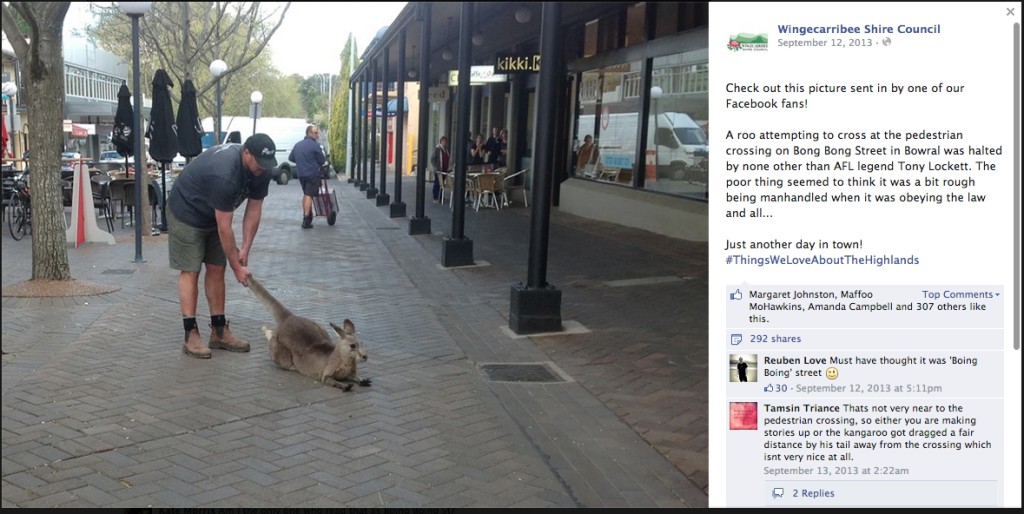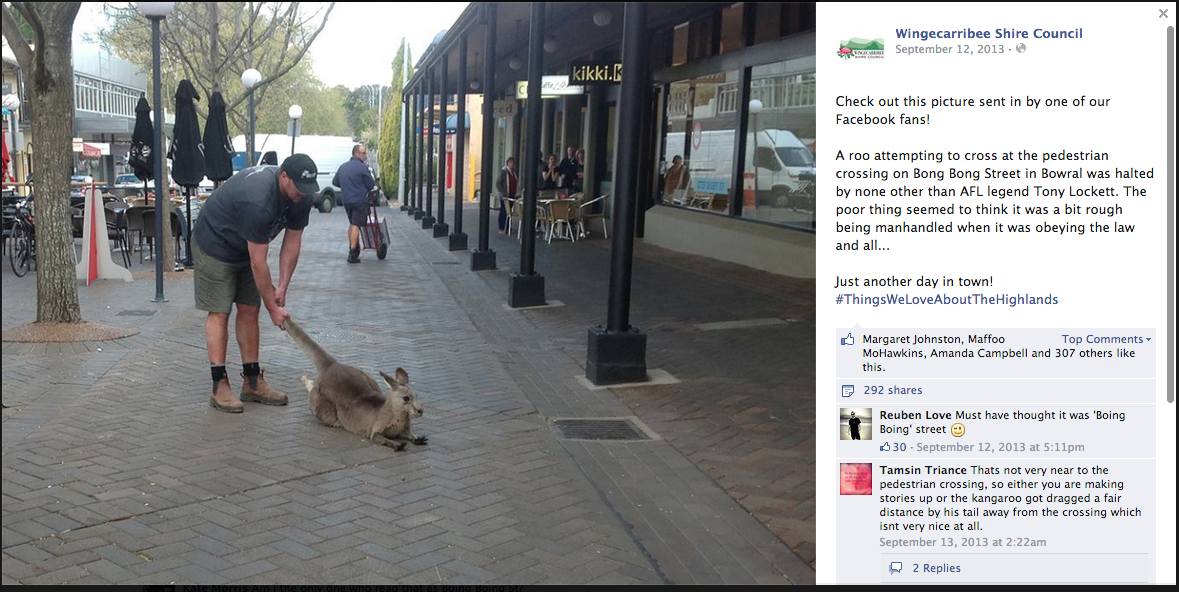
It’s been some time since I’ve written about my PhD – I’ve been far to busy actually writing it instead (and teaching). In that time, the whole concept has shifted quite a bit – somewhat under its own weight and somewhat due to my own interests. This is a ‘catch-up’ post, partly to keep me on track as I write up this year.
Early on, I was concentrating on the role that participatory media might play in the function of local government, with a particular focus on five local governments in and adjoining the Illawarra region of New South Wales. Even early last year I submitted an article (since published) which suggested this shape:
Further research in this project will ground the participatory behaviours evident on [social networks] in wider concerns of the field of communication and media studies as they relate to the engagement practices of local governments, and position the e-participation project in relation to fields such as e-government.
Since then, the work has bent itself around an abiding personal interest in how media items come to reflect and shape our interactions and experience of the places around us. For too long, media studies has focused on what is far away, rather than what is nearby and everyday. My thesis addresses this concern. The interesting thing is that it really always has been about this very thing, it just took me some time to realise it.
What brought me about, chiefly, was an excellent short book by Shaun Moores called Media, Mobility and Place. The paper mentioned above was presented at a conference last July at which a number of papers covered similar topics, and these also helped.
What I have come up with now draws on a range of theories across geography, media studies and philosophy to map out the media environment in three of the original case studies (Wingecarribee Shire, Wollondilly Shire, and Wollongong City). It sketches the ways in which media like television, books, newspapers, social media and council publications contribute to an experience of place. In part, it arises from my thinking about how what I know about the places I love and live in comes from what I’ve seen first hand or heard through real-world social networks and what comes instead in some mediated form.
I’m drawing on ideas like phenomenology, the philosophy of Martin Heidegger, and public sphere theory to suggest the way in which lived experience can be supplemented with mediated experience even for very local places. I’m smashing all of that together with the bare elements of governance theory and drawing it in against a background of media convergence and participatory media.
All of which brings me to a book just released called Locative Social Media: Place in the Digital Age, by Leighton Evans, which seems to cover much of this ground by way of:
a digital post-phenomenology of place is developed to explain how place is mediated in the digital age
Books like this tend to have a habit of throwing PhD students into a sweat that someone else has beaten them to the punch, but I foreshadowed this concern by sticking tightly to my case studies.
I’m drawing on examples like:
- local Indigenous stories of place
- coverage of crimes such as those of Ivan Milat and the Wollongong Council corruption hearings
- my own study of the Instagram hashtags #Wollongong, #Wollondilly, and #Bowral
- my study of the three local council social media pages and policies
There will be five chapters:
- an introduction mapping out general ideas about the case studies and introducing examples
- council-initiated media, making use of interviews with council staff and elected councillors
- social networks and other emergent media
- industrial media (books, television, newspapers)
- Indigenous perspectives
I’m aiming to have the write-up complete and submitted by the end of this year!
